Percy Julian
Percy Julian should be a name known to all of society for the contributions he made to the field of science. His research and development of synthetic compounds made him one of the most significant contributors to science and health care in the 20th century.
Percy Julian was born on April 11, 1899 in Birmingham, Alabama, one of six children. His father, a railroad mail clerk, and his mother, a school teacher, stressed education to their children. His father was denied the opportunity to pursue an education and was determined that his children would have that chance. This emphasis would ultimately prove successful as two sons went on to become physicians and three daughters would receive Masters degrees. His son Percy, however, would become the most successful of the children.
Percy attended elementary school in Birmingham, Alabama and later moved to Montgomery, Alabama where he attended high school at the State Normal School for Negroes. Upon graduation in 1916, Julian applied to and was accepted by DePauw University in Greencastle, Indiana. At DePauw, he began as a probationary student, having to take higher level high school classes along with his freshman and sophomore course load. This was quite burdensome to him as he realized that his white classmates were far superior to him in their academic readiness. Furthermore, he was forced to live and eat off-campus, in subpar conditions compared to his classmates. At some point he made friends with some members of the Sigma Chi fraternity and was permitted to sleep in the basement of the fraternity house in return for waiting on them and keeping the boiler going. Although he struggled early, he soon caught up to his classmates and then surpassed them academically in his sophomore year with the help and encouragement of his chemistry professor William Blanchard. He proved himself well, graduating first in his class in 1920, named a member of the Sigma Xi honorary society and a Phi Beta Kappa member. He was also selected as the class valedictorian and though at the top of his class, he was discouraged from seeking admission into a graduate school because of the possibility that his presence might stir up racial sentiment on the part of future coworkers and employers. He therefore took the advice of an advisor and took a position at Fisk University, a Black college in Nashville, Tennessee as a chemistry teacher. Fisk was where his idol, St. Elmo Brady, attended school. Brady was the first Black ever to receive a Doctorate in chemistry.
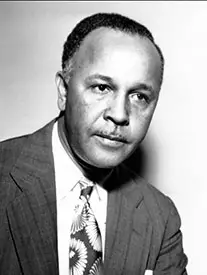
After two years at Fisk, Julian was awarded the Austin Fellowship in Chemistry and journeyed to Cambridge, Massachusetts to attend the prestigious Harvard University. Julian excelled when finally given an opportunity to pursue graduate studies. Despite his high credentials, Julian found himself treated no differently than other Blacks in Cambridge. Blacks were barred from living in dormitories in Harvard Yard, but it did not deter him. He received straight A’s and finished at the top of his class, receiving a Masters Degree in 1923. He studied for another three years at Harvard, in pursuit of his Ph.D. but was denied a position as a teaching assistant at any major universities because of the perception that white students would refuse to learn under a Black instructor. A teaching assistantship was a necessary requirement to earn a Ph. D. at Harvard, thus he dropped out of the University and moved on to a teaching position at West Virginia State College for Negroes in Charleston, West Virginia. He left West Virginia when he was offered a position as an associate professor of chemistry at Howard University in Washington, D.C. He replaced St. Elmo Brady in this position when Brady left to return to Fisk.
In 1929, Julian qualified for and received a Fellowship from the General Education Board and traveled to Vienna, Austria in pursuit of a Ph.D. degree. The University of Vienna had the top program for research and study in the field of Natural Products Chemistry and he studied under the tutelage of Professor Ernst Späth, renowned in the field of natural products chemistry, with a particular interest in the study of alkaloids. Alkaloids are natural occurring chemical compounds that are produced by a variety of organisms, including bacteria, fungi, plants, and animals. Caffeine and nicotine are two well known alkaloids and some alkaloids are so powerful that the amount that could fit in a thimble could be enough to knock out an elephant.
An Austrian shrub named Corydalis cava was well known for providing pain relief and treating heart palpitations. Spath tasked Julian with isolating the active ingredient in Corydalis cava and to identify its chemical structure. It was a tremendous moment for Percy as he was being challenged because of his immense talent and finally given an opportunity to focus solely on research.
He was also excited because of the way he was treated in Vienna. Blacks were very rare in that part of Europe and Percy was treated with admiration by those around him. He attended plays and operas, enjoyed fine restaurants and the nightlife and he dated several women, some of whom were white. He wrote to some of his colleagues back at Howard, regaling them with stories of his travels and exciting lifestyle. While he spent many a night out on the town, he was in his laboratory by 8:00 AM every morning. The search for the active ingredient in Corydalis cava was akin to searching for a needle in a haystack but in his second year, he triumphantly isolated it and received his Ph.D. in 1931. He was described by Spath as “an extraordinary student, the likes of which I have never had before in my career as a teacher.”
Julian returned to the United States and to Howard University where he served as the head of the school’s chemistry department. He was determined to turn Howard into a great center for chemical research, an ambitious goal to be sure. He worked with Josef Pikl, his friend and collaborator when they were students in Vienna. They authored several papers, distinguishing Julian as the first Black chemist to be the senior author of a publication. In many minds, he was now the preeminent Black chemist in the United States.
Just when everything seemed to be moving in the right direction for him, his career became derailed. Julian had criticized a fellow chemist, Jacob Shohan, goading him into resigning. Shohan, who was white, retaliated by sending letters that Julian had written from Vienna to the Black press. He was also accused of having an affair with the wife of his laboratory assistant, Robert Thompson. Thompson went public with his accusations and was fired by the university. He also decided to reveal Julian’s “Vienna letters” to the Black press. The backlash was immense as Julian was not only derided for his interest in dating white women overseas, but also for having an adulterous affair. Pressure mounted on Julian and Howard University and as a result he resigned his position in 1932.
Percy moved back to DePauw at the request of his former professor William Blanchard. He was appointed to serve as a research fellow, supervising the laboratory session. This was a big step down from his previous position but he was placated to an extent when he was joined again by his collaborator Josef Pikl. Julian’s tenure as an instructor was remarkable in that 11 of his students published papers in the Journal of the American Chemical Society, an unheard of number for a class of that size. Although the department was very pleased with his accomplishments, the local American Legion complained about the school hiring a Black teacher who has been forced to leave Howard University. He was thus forced to stop teaching, but was allowed to continue researching.
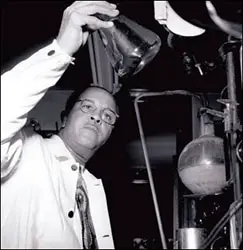 He next took on a project that had baffled scientist for more than 50 years. Inside of the Calabar bean was an alkaloid called physostigmine which was used to treat glaucoma. The problem was that no one had been able to create a synthetic version of physostigmine. Julian, thus set out to synthesize the alkaloid (meaning to make an almost identical, less expensive version of it in a laboratory, detailing the steps to do so). Julian was not the only one try to synthesize the alkaloid. A professor at Oxford University named Sir Robert Robinson had been seeking to synthesize physostigmine for years and had published numerous papers about it in scientific journals. Robinson was considered by many to be the premier organic chemist of his time. Julian, though, thought Robinson’s work was sloppy and he and Pikl worked in their lab to refine the approach needed to achieve synthesis. They attacked Robinson’s methods, engaging in a very risky high wire act in the academic community, basically laying their credibility and their careers on the line. Julian set out to prove that the crystals of his synthetic version would melt at the same temperature (135 degrees) as the naturally found physostigmine. They did, and Julian and Pikl were hailed for creating what chemists refer to as “total synthesis.” On the basis of his work, Professor Blanchard submitted Julian’s name as a candidate for a permanent faculty position at DePauw, but he was rejected. Percy had no better luck as he sought a faculty position across the country, with schools convinced that students at elite universities would be loathe to study under a Black professor.
He next took on a project that had baffled scientist for more than 50 years. Inside of the Calabar bean was an alkaloid called physostigmine which was used to treat glaucoma. The problem was that no one had been able to create a synthetic version of physostigmine. Julian, thus set out to synthesize the alkaloid (meaning to make an almost identical, less expensive version of it in a laboratory, detailing the steps to do so). Julian was not the only one try to synthesize the alkaloid. A professor at Oxford University named Sir Robert Robinson had been seeking to synthesize physostigmine for years and had published numerous papers about it in scientific journals. Robinson was considered by many to be the premier organic chemist of his time. Julian, though, thought Robinson’s work was sloppy and he and Pikl worked in their lab to refine the approach needed to achieve synthesis. They attacked Robinson’s methods, engaging in a very risky high wire act in the academic community, basically laying their credibility and their careers on the line. Julian set out to prove that the crystals of his synthetic version would melt at the same temperature (135 degrees) as the naturally found physostigmine. They did, and Julian and Pikl were hailed for creating what chemists refer to as “total synthesis.” On the basis of his work, Professor Blanchard submitted Julian’s name as a candidate for a permanent faculty position at DePauw, but he was rejected. Percy had no better luck as he sought a faculty position across the country, with schools convinced that students at elite universities would be loathe to study under a Black professor.
Julian got married in 1935 to Anna Johnson, also a Phi Beta Kappa winner, who was pursing a Ph.D. in sociology. With little hope in the academic world, Percy and Pikl sought employment in the private sector, applying to DuPont, the largest chemical company in the United States. After their interviews, DuPont offered Pikl a job but apologized to Julian saying “We didn’t know you were a Negro.” Julian persuaded Pikl to accept the position and continued to look for work. The Institute of Paper Chemistry, in Appleton, Wisconsin looked to make him an offer but they were informed during a meeting that Appleton had a law on the books that prevented Blacks from staying overnight in the town. Fortunately, one of the members of the board in that meeting was William J. O’Brien, the Vice-President of the Glidden Company. He offered Percy the position of Director of Research of the Soya Product Division, an unheard of opportunity for a Black man at that time. He quickly accepted the job.
The Glidden Company was a leading manufacturer of paint and varnish and looked for Julian to develop compounds from soy-based products which could be used to make paints and other products. Soy beans originally came to the United States as a hay crop for feeding cattle but the plant produces its own nitrogen at a time when the were very few fertilizer available. Multiple uses for the lowly soy bean were championed by George Washington Carver as well as Henry Ford, the head of the Ford Motor Company, who looked to make paint and car parts out of the bean.
Adrian Joyce, the head of the Glidden Company tasked Julian with isolating the protein of the soybean. It took more than a year, but finally Percy and his team were able to extract the “Alpha protein” and able to produce it in bulk. No one had been able to do this before and it led to Glidden being able to offer a whole new line of products including Latex paint.
Percy next turned his attention to developing a way to inexpensively create male and female hormones from soy beans. These hormones would help to prevent miscarriages in pregnant women and would be used to fight cancer and other ailments. A pregnancy hormone called progesterone was used to prepare a woman’s uterus for childbirth. Julian realized that this steroid could help to reduce the number of miscarriages and premature births that women incurred, so he set out to find a way to produce it. Many scientists had tried to produce steroids from animal extracts but they only yielded minuscule amounts. Julian sought to convert plant steroids into an animal steroid that could be used for humans. He and his staff struggled to find a solution until one day an accident at the lab had allowed water to seep into a soybean oil tank. Amongst the resulting sludge that was now found in the tank were crystals. After analyzing these crystals he found that they were stigmasterol, a steroid. He realized that the water had caused the stigmasterol to become isolated from the soybean oil. He next developed a method for converting stigmasterol into progesterone in bulk. Glidden soon became one of the largest manufacturers of human sex hormones in the world. Despite his success, Julian found that many things in America had not changed when he was barred from attending a large conference on hormones that was held at an exclusive retreat in Maryland. Fortunately, his white colleagues protested on his behalf for three days and he was eventually allowed to attend.
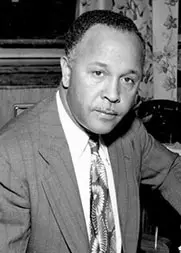 In 1944, Percy was thrown a curveball when a rival in creating synthetic hormones named Russell Marker created a company called Syntex. Russell had discovered that a Mexican giant yam was richer in steroids than the soybean, thus providing a greater yield than Julian had been able to produce. Nonetheless, Percy continued to find success, coming up with products such as aero-foam which worked as a flame retardant and was used by the United States Navy and saved the lives of countless sailors during World War II.
In 1944, Percy was thrown a curveball when a rival in creating synthetic hormones named Russell Marker created a company called Syntex. Russell had discovered that a Mexican giant yam was richer in steroids than the soybean, thus providing a greater yield than Julian had been able to produce. Nonetheless, Percy continued to find success, coming up with products such as aero-foam which worked as a flame retardant and was used by the United States Navy and saved the lives of countless sailors during World War II.
His personal life was changing as well as he moved his family into the well-to-do town of Oak Park, Illinois. One would think that the Julian’s family would be fondly welcomed into their new neighborhood with Percy being awarded the NAACP’s prestigious Spingarn Medal and named “Chicagoan of the Year” by the Chicago Sun-Times. Unfortunately, not all of his neighbors felt that way and the family was harassed to the point where an explosive device was detonated outside of their home and someone, on another occasion, tried to burn the house down. The Julian’s were defiant in their refusal to leave and soon the community rallied around them, publishing an apology to them signed by hundreds of families. On another occasion a group of about 200 people marched up to their house chanting “he stays, he stays.”
As the turmoil in his personal life subsided, his professional life moved into a new phase. One of the most painful human diseases is rheumatoid arthritis, which is a swelling of the joints. The pain from it was debilitating, almost to the point of being crippling. Scientists had tried for years to come up with a cure, only to see a wild variety of remedies being offered but to no avail. Finally at a conference in 1949, a representative of the Mayo Clinic showed a film that showed patients relieved of their arthritic pain by a new drug called Compound-C (later to be known as Cortisone). Cortisone was derived from the bile of cattle carcasses, but it would take 1,000 carcasses to produce enough cortisone to treat one patient for a year. Obviously the amount available to treat patients was minuscule, and sold for $4,000/ounce, 100 times the value of gold at the time. Along with chemists from around the world, Percy set out in pursuit of creating an inexpensive, synthetic version of Cortisone.
 He started by taking a compound called Compound-S that was almost identical to cortisone and synthesizing it. Compound-S and cortisone differ by only one oxygen atom in its chemical structure. For Percy, the challenge was to find a way to insert that one oxygen atom into the precise location in the Compound-S structure to convert it into Cortisone. In 1952, scientists at the Upjohn Company discovered that through a fermentation process, a common mold could place an oxygen atom precisely in position 11 on the Common-S structure. Percy sought to synthesize Compound-S, which previously had seemed a useless compound. However, Upjohn decided to pursue producing cortisone from progesterone instead of Compound-S. Because progesterone could be manufactured more inexpensively through Syntex’s Mexican yams, Julian tried to persuade Glidden to build a factory in Mexico compete in the yam synthesization field against Syntex. Glidden declined and announced that they were getting out of the steroid development business. After receiving 109 patents for the company, Julian left Glidden to create his own company in 1953.
He started by taking a compound called Compound-S that was almost identical to cortisone and synthesizing it. Compound-S and cortisone differ by only one oxygen atom in its chemical structure. For Percy, the challenge was to find a way to insert that one oxygen atom into the precise location in the Compound-S structure to convert it into Cortisone. In 1952, scientists at the Upjohn Company discovered that through a fermentation process, a common mold could place an oxygen atom precisely in position 11 on the Common-S structure. Percy sought to synthesize Compound-S, which previously had seemed a useless compound. However, Upjohn decided to pursue producing cortisone from progesterone instead of Compound-S. Because progesterone could be manufactured more inexpensively through Syntex’s Mexican yams, Julian tried to persuade Glidden to build a factory in Mexico compete in the yam synthesization field against Syntex. Glidden declined and announced that they were getting out of the steroid development business. After receiving 109 patents for the company, Julian left Glidden to create his own company in 1953.
Julian Laboratories was established in Franklin Park, Illinois. Its goal was to create steroid intermediates, compounds that were often only a step or two short of a finished product. He hoped that pharmaceutical companies would purchase them from his company because he could manufacture them more cheaply than they could. He received a $2 million contract from Upjohn, but Syntex created a road block, refusing to sell him the barbasco root from the Mexican yam. Julian realized he would have to build his own plant in Mexico to process the yam. After using his personal savings and raising money from friends and colleagues, he built Laboratorios Julian de Mexico plant in Mexico City, Mexico and then found himself running into another road block. Syntex had convinced the Mexican government to prevent Laboratorios Julian from harvesting the barbasco root. On the verge of financial ruin, Percy was stunned when an old friend, Abraham Zlotnik, told him the the barbasco root also grew in Guatemala. He acquired the root and began manufacturing the steroid intermediaries.
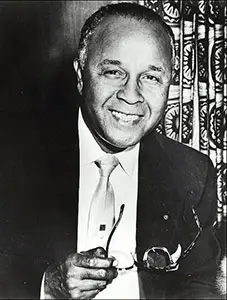 Unfortunately, much of his money was still tied up in the idle factory in Mexico. He complained that Sentex had persuaded the Mexican government to block him from obtaining the barbasco root and other companies made the same complaint. In 1956, the United States Senate held hearings on the matter. Julian testified and the Justice Department took action against Sentex, thereby opening the market to Julian Laboratories. His persistence paid off and with a great deal of effort from his employees, Julian Laboratories became a commercial success. In 1961 he sold the Franklin Park plant to Smith, Kline and French, a giant pharmaceutical company, receiving a sum of 2.3 million dollars, a staggering amount for a Black man at that time. He was, in fact, one of the wealthiest Black men in the United States at the time.
Unfortunately, much of his money was still tied up in the idle factory in Mexico. He complained that Sentex had persuaded the Mexican government to block him from obtaining the barbasco root and other companies made the same complaint. In 1956, the United States Senate held hearings on the matter. Julian testified and the Justice Department took action against Sentex, thereby opening the market to Julian Laboratories. His persistence paid off and with a great deal of effort from his employees, Julian Laboratories became a commercial success. In 1961 he sold the Franklin Park plant to Smith, Kline and French, a giant pharmaceutical company, receiving a sum of 2.3 million dollars, a staggering amount for a Black man at that time. He was, in fact, one of the wealthiest Black men in the United States at the time.
After years of struggling for respect in his field and his community, Julian was finally recognized as a genius and a pioneer. He received countless awards and honors and was asked to serve on numerous commissions and advisory boards. He was named to the National Academy of Sciences in 1973, only the second Black to ever receive the honor and a United States Postal Service commemorative stamp was issued in his honor in 1993.
Percy Julian died of liver cancer in 1975 and is known worldwide as a giant in the field of chemistry and a trailblazer for future Black scientists around the world.
Percy Julian – Forgotten Genius
Search for More Info on Percy Julian

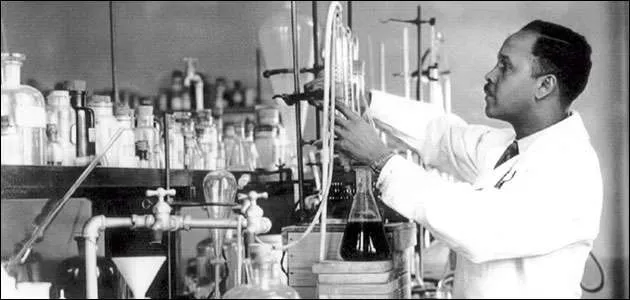
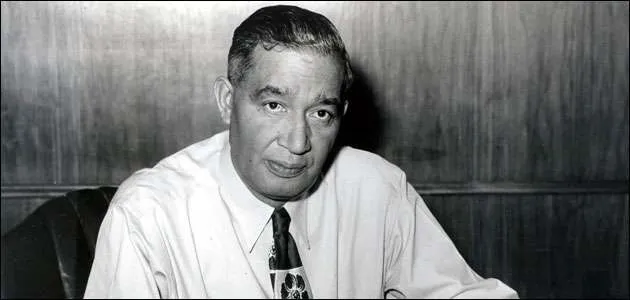
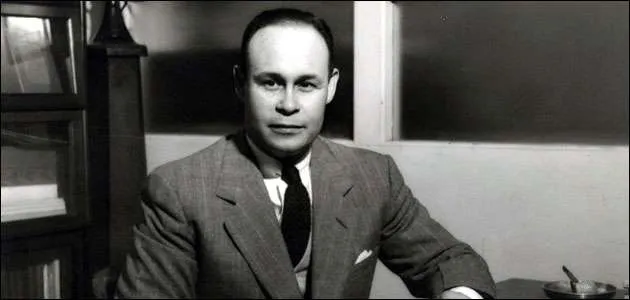
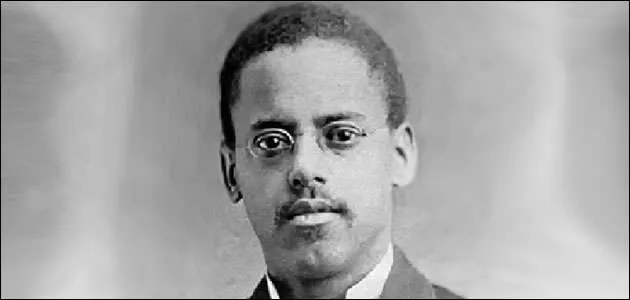
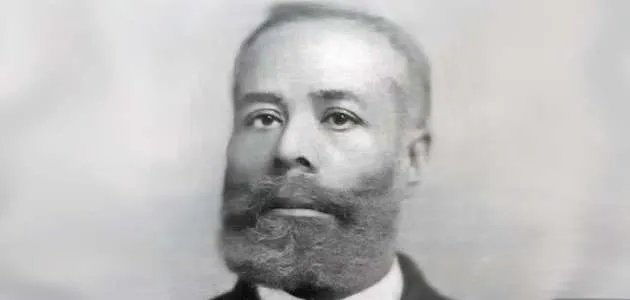
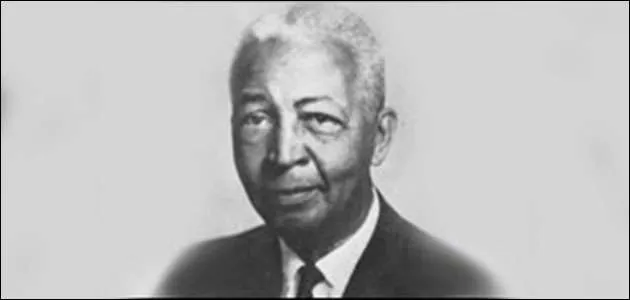
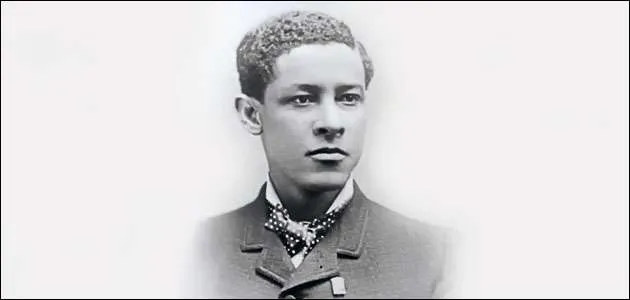

 Like Us on Facebook
Like Us on Facebook Tweet Us on Twitter
Tweet Us on Twitter Watch Us on YouTube
Watch Us on YouTube Pin Us on Pinterest
Pin Us on Pinterest Link to Us on LinkedIn
Link to Us on LinkedIn Adscape International, LLC
Adscape International, LLC PO Box 173 Brandywine, MD 20613
PO Box 173 Brandywine, MD 20613 240-244-9660
240-244-9660


Leave a Reply
Want to join the discussion?Feel free to contribute!